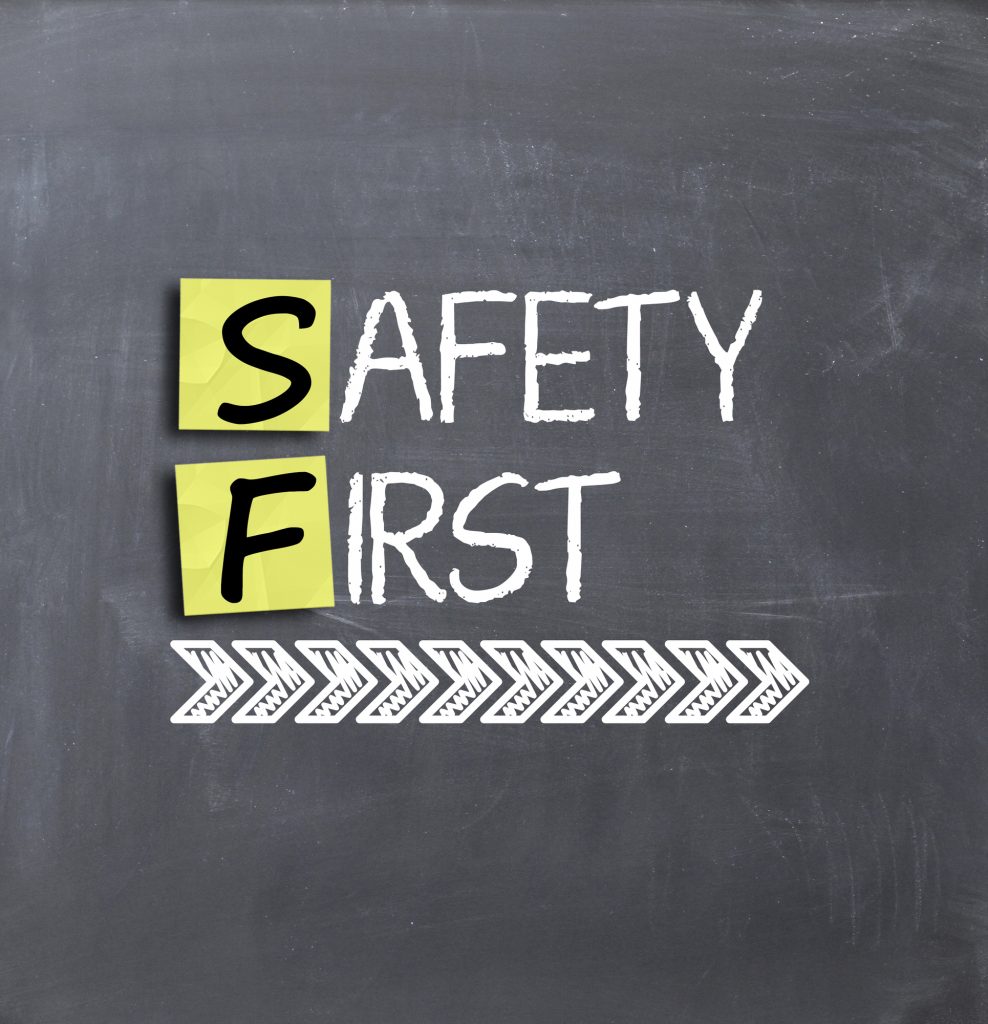 Written by Nadine Westwood
Written by Nadine Westwood
Misinformation spreads like wildfire in the age of TikTok and pseudoscience. Sadly, health myths, especially myths about digestive health, seem to have the most traction, leading to harmful practices or neglected conditions.
As people on the front lines, healthcare professionals are the first to witness the harm misinformation can cause. Therefore, it’s our responsibility to address and debunk these myths with clear, factual education.
This is what we’ll try to do in today’s piece, where we’ll analyze and debunk 10 of the most popular digestive health myths.
-
Colon Cleansing is Necessary for Good Health
Some complementary health practitioners assert that the body stores toxins in the colon, necessitating a “detox procedure.” To “cleanse the colon,” they advise using enemas or laxatives (among other methods). Advocates maintain that this process eliminates accumulated waste, leaving you feeling more energetic.
However, studies show no scientific evidence supporting routine colon cleanses to remove toxins. The human body already has an effective detox system (the liver and kidneys) and filters harmful substances without external help.
Following this myth can harm more than help. Frequent cleanses may disrupt gut flora, leading to digestive imbalance and weakened immunity. Overuse can cause dehydration, electrolyte imbalances, or damage to intestinal walls.
Instead of cleanses, it’s best to focus on a fiber-rich diet and hydration, the natural ways the body stays healthy internally.
-
Probiotics Are a Cure-All for Digestive Issues
Probiotics, often found in supplements and fermented foods, have reached superfood status (they are on a similar level of fame with kale and dark chocolate).
Due to this undeserved fame, a growing percentage of the population seems to believe probiotics can cure all digestive problems, including bloating, diarrhea, or irritable bowel syndrome (IBS). They are marketed as a one-size-fits-all solution for gut health.
Science tells a different story, though. While some studies show probiotics may benefit specific conditions (such as antibiotic-associated diarrhea or certain IBS symptoms), their effects vary widely by strain and individual.
In-depth studies show that probiotics aren’t universally effective and can even delay microbiome recovery after antibiotics in some cases. Therefore, the best way to benefit from probiotics is to get a recommendation from a dedicated gastroenterologist, who can use advanced diagnostic methods to determine which strains may help a specific individual.
This myth may not seem dangerous, but misleading marketing campaigns can convince people to ignore or delay more effective treatments. Additionally, probiotic supplements aren’t cheap, and there’s always the risk of introducing unnecessary strains into the body.
Sustainable gut health relies on personalized care through dietary adjustments, hydration, exercise, and consulting experienced healthcare providers.
-
You Should Have a Bowel Movement Every Day
Some individuals feel uneasy if they don’t have daily bowel movements. According to this myth, a lack of bowel movements in a day is a sign of digestive health problems.
Bowel habits vary from person to person. Research shows that a normal frequency ranges from three times a day to three times a week. Factors like diet, hydration, activity levels, and stress all influence regularity.
Believing this myth can lead to the overuse of laxatives or unnecessary worry about irregularity. This may harm the natural rhythm of your gut and create dependency on stimulants for bowel movements. Self-treating can also mask underlying conditions that genuinely need medical evaluation.
-
Juice Cleanses Detoxify your Digestive System
Juicing for detox is a trend that started somewhere in the 1970s as a means of absorbing healthy nutrients. Fueled by marketing efforts, the trend reached its peak in the 2000s and 2010, leading to a projected $75 billion market by 2026.
These cleanses involve consuming only fruit and vegetable juices for a designated period. According to claims, this is an effective way to cleanse the body of toxins, lose weight, and improve energy levels.
Science disproves these perceived benefits through studies that found no evidence supporting juice cleanses as necessary or effective. According to these studies, juice-only diets lack essential nutrients like protein, fats, and fiber for energy and gut health. Extended use of these methods may cause blood sugar spikes, muscle loss, fatigue, or electrolyte imbalances.
-
Stress Causes IBD
Inflammatory Bowel Disease (IBD) manifests through symptoms like chronic diarrhea, abdominal pain, cramping, rectal bleeding, fatigue, and unintended weight loss. People may also experience urgent bowel movements and reduced appetite.
Alternative healthcare practitioners promote the idea that IBD is caused by stress. According to them, stress management (with the associated supplements) and emotional control should be enough to alleviate symptoms and even treat the problem.
However, research shows IBD is caused by a combination of genetic predisposition, immune system dysfunction, and environmental triggers – not stress. A 2019 study confirms stress may exacerbate symptoms but does not initiate the condition.
In conclusion, while managing stress can improve symptom management and overall well-being, treating IBD requires a comprehensive approach led by healthcare professionals.
-
Everyone Should Follow a Gluten-Free Diet
Some believe that avoiding gluten leads to better digestion and overall health. A gluten-free diet is also marketed as a way to lose weight in a “healthy” way. Add to this the endorsement from high-profile celebrities and influencers, and it’s easy to see why so many people still believe gluten is harmful.
Scientific evidence doesn’t support this trend. Gluten-free diets are essential for individuals with celiac disease or non-celiac gluten sensitivity, but no data supports health benefits for the general population.
In reality, unnecessary gluten restriction may reduce nutrient intake because those who follow it adopt restrictive eating habits. Gluten-free products often lack fiber and key vitamins like B12 or iron, increasing the risk of deficiencies. It may also divert attention from other dietary issues which should be addressed correctly.
Unless you are diagnosed with a specific condition requiring it, there is no reason to avoid gluten. For balanced nutrition, focus on a diet rich in whole grains (like wheat or barley), fruits, vegetables, and lean proteins.
-
Apple Cider Vinegar Cures Digestive Problems
Due to its antimicrobial properties, useful digestive enzymes, and anti-inflammatory properties, apple cider vinegar (ACV) is often perceived as a natural and safe alternative to conventional medicines.
ACV has a long history of use in traditional medicine, which has seeped into modern practices through homeopathic teachings and marketing. Some people believe it can cure digestive problems such as bloating, acid reflux, or indigestion.
While ACV may provide some digestive aid for individuals with low stomach acid, studies have shown that it offers no universal benefits for most digestive problems. In fact, excessive use could irritate the esophagus or erode tooth enamel.
Overconsumption can also disrupt the body’s natural pH balance and cause gastrointestinal discomfort rather than relieve it.
-
All Fiber is Good for Digestion
Fiber promotes healthy digestion by supporting regular bowel movements, nourishing beneficial gut bacteria, and regulating blood sugar and cholesterol levels. This is a well-known fact within the scientific community.
However, we can’t assume that all fibers benefit digestion equally, regardless of type or source.
In reality, there are two types of fiber (soluble and insoluble), and their effects differ:
- Soluble fiber (found in oats, beans, and fruits) helps regulate blood sugar and soften stools.
- Insoluble fiber (in whole grains and vegetables) adds bulk to stool for regularity. Too much of this fiber can worsen bloating or diarrhea in sensitive individuals like those with IBS.
So, overloading on high-fiber foods indiscriminately is not the solution to healthy digestion. Fiber needs vary by person, and the wrong balance can upset your gut rather than help it.
-
You Should Avoid All Fatty Foods
The “fat is bad” myth stems from dietary guidelines in the 1970s and 1980s when fat was incorrectly blamed as the primary cause of heart disease and obesity.
Influential studies, like the Seven Countries Study by Ancel Keys, linked saturated fats to cardiovascular issues. However, this research oversimplified complex nutrition science.
In response, both health-responsible agencies and the media started heavily promoting low-fat diets. Food manufacturers replaced fats with sugars and refined carbohydrates in processed foods to meet the demand for low-fat products. Ironically, this shift contributed to rising rates of obesity and metabolic disorders.
Today’s research recognizes that not all fats are harmful. Some fats, like those in avocados, nuts, seeds, and olive oil, are essential for nutrient absorption (especially vitamins A, D, and E), energy production, and supporting cell membranes.
While excessive intake of trans or saturated fats may cause issues like bloating or sluggish digestion in some cases, balanced fat consumption is vital for gut health and hormone regulation.
-
All Probiotics are the Same
Probiotics gained popularity as more people became aware of gut health linked to overall well-being. Aggressive marketing amplified claims of benefits for digestion, immunity, and more. Modern trends favoring so-called natural wellness solutions further drove demand for probiotic-rich products like supplements, yogurt, and fermented foods.
While it’s not a bad thing to consume more foods perceived as being rich in probiotics, it’s important to understand the difference in strains.
Different strains serve specific purposes. For instance, Lactobacillus acidophilus helps with lactose digestion, while Saccharomyces boulardii targets antibiotic-associated diarrhea or IBS symptoms.
In conclusion, generic supplements may not address specific concerns. It also risks overlooking more effective dietary adjustments or treatments for digestive problems. For best results, it’s essential to choose probiotic products with clinically validated strains tailored to an individual’s unique condition.
Wrap Up
Misinformation is running rampant these days and can mislead patients, causing harm or delaying proper care. As health specialists, we must prioritize evidence-based guidance to counter harmful myths that keep people away from adequate treatments.
Author bio:
Nadine Westwood is a health coach and writer who helps her clients achieve phenomenal and sustainable results by combining nutrition, fitness, education and fun!
References:
Natural colon Cleansing & Detox: Is it necessary? (n.d.). WebMD. https://www.webmd.com/balance/natural-colon-cleansing-is-it-necessary
Debunking Detox: Your colon doesn’t need cleaning! (n.d.). Office for Science and Society. https://www.mcgill.ca/oss/article/medical-critical-thinking-you-asked/debunking-detox-your-colon-doesnt-need-cleaning
Day, R. L., Harper, A. J., Woods, R. M., Davies, O. G., & Heaney, L. M. (2019). Probiotics: current landscape and future horizons. Future science OA, 5(4), FSO391. https://doi.org/10.4155/fsoa-2019-0004
Ciorba M. A. (2012). A gastroenterologist’s guide to probiotics. Clinical gastroenterology and hepatology: the official clinical practice journal of the American Gastroenterological Association, 10(9), 960–968. https://doi.org/10.1016/j.cgh.2012.03.024
Heaton, K. W., Radvan, J., Cripps, H., Mountford, R. A., Braddon, F. E., & Hughes, A. O. (1992). Defecation frequency and timing, and stool form in the general population: a prospective study. Gut, 33(6), 818–824. https://doi.org/10.1136/gut.33.6.818
Bóna, E., Forgács, A., & Túry, F. (2018). A léböjtkúrák és az atípusos evészavarok lehetséges kapcsolata. Kvalitatív előtanulmány [Potential relationship between juice cleanse diets and eating disorders. A qualitative pilot study]. Orvosi hetilap, 159(28), 1153–1157.
Sun, Y., Li, L., Xie, R., Wang, B., Jiang, K., & Cao, H. (2019). Stress Triggers Flare of Inflammatory Bowel Disease in Children and Adults. Frontiers in pediatrics, 7, 432. https://doi.org/10.3389/fped.2019.00432
Gluten-free diet gains popularity, despite no rise in celiac disease. (2016, September 6). Medical News Today.
Hadi, A., Pourmasoumi, M., Najafgholizadeh, A., Clark, C. C. T., & Esmaillzadeh, A. (2021). The effect of apple cider vinegar on lipid profiles and glycemic parameters: a systematic review and meta-analysis of randomized clinical trials. BMC complementary medicine and therapies, 21(1), 179. https://doi.org/10.1186/s12906-021-03351-w
Lattimer, J. M., & Haub, M. D. (2010). Effects of dietary fiber and its components on metabolic health. Nutrients, 2(12), 1266–1289. https://doi.org/10.3390/nu2121266
Please also review AIHCP’s Holistic Nursing Certification and see if it meets your academic and professional goals. These programs are online and independent study and open to qualified professionals seeking a four year certification


 Written by
Written by 

 Written by Ava.
Written by Ava. Written by Nadine Westwood
Written by Nadine Westwood

 Written by Catherine Alvarez.
Written by Catherine Alvarez.